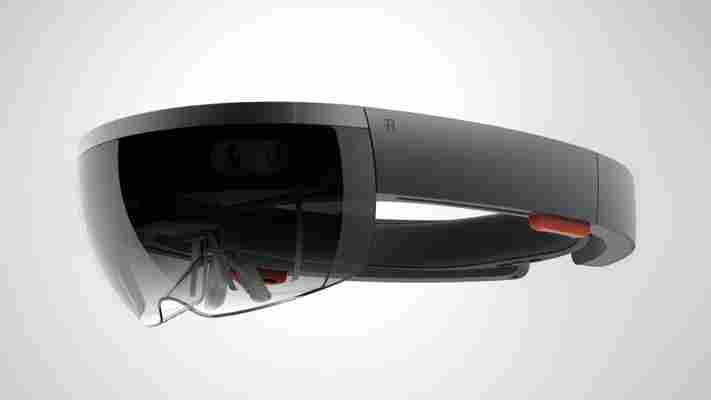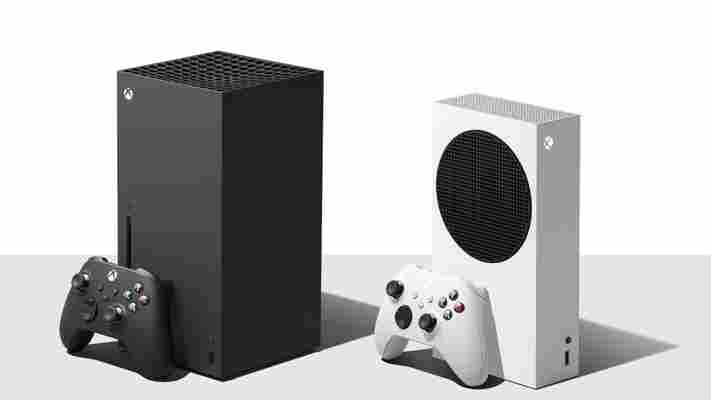Looking for a cheap, light electric bike? Last week, Estonian bike-builder Ampler unveiled two brand new featherweight e-bikes, the Juna and the Axel, and now it's updated three of its most popular existing models as well.
The Ampler Curt , Stout, and Stellar have all received a redesign for 2022, and now feature integrated GPS, allowing you to easily find where you locked them and unlock them remotely. They also have a new electronics platform with an integrated display built into the top tube where you can check remaining range, trips stats, and battery range. You can also use it to control the power support level
The Ampler Curt, which has held a place in our roundup of the best e-bikes for over a year thanks to its super slim frame and light weight, is perhaps the best known of the trio. Like the original, the 2022 version is a city bike available in both single-speed and geared versions (the latter of which is better suited to tackling hills and helps you eke out more mileage from its battery).

Whichever model you opt for, it's tough to tell the difference between the Curt and a conventional bicycle without close inspection. The battery is fully integrated into a surprisingly slim downtube, and all wiring is internally routed.
The new Curt has a range of up to 63 miles / 100km depending on power use, terrain, and riding conditions, and averages about 43 miles / 70km in real-world conditions. Its battery is fully integrated into the downtube, giving the impression of a conventional bike, and the single-speed version has a carbon drive belt to reduce maintenance.
The single-speed model weighs a mere 14.4kg, while the 11-speed chain drive version is 15.7kg. For comparison, the similarly styled and specced Cowboy 4 weighs between 18.9kg and 19.2kg.
That slimmer frame does come at a slightly higher price, though. While the Cowboy 4 is $2,490 / £2,290 (about 3,400), the 2022 Ampler Curt costs €3,190 (about $3,500 / £2,700 / AU$4,900), putting in squarely in the mid-range price bracket for a class one e-bike .
Stout and Stellar
The second-gen Ampler Stout is a strong all-purpose e-bike for everyday riding, with ergonomically designed handlebars and saddle, new brighter lights for visibility at night, and puncture-protected tires. It has nine gears and a chain drive, providing a handy midway point between the single-speed and 11-speed Ampler Curt models.
It weighs 17.8kg (approximately the same as the super portable GoCycle G4 folding e-bike ), and has the same battery and motor as the Curt. It costs €2,790 (about $3,000 / £2,300 / AU$4,200), making it a slightly more affordable option than the Curt, and roughly the same price as the versatile Ribble CGR AL e .

The final updated bike, the Ampler Stellar, is similar to the Stout in terms of specs, but with a low step-through design for easier mounting and dismounting, and a more upright sitting position. There's also a small frame size for riders between 5'3" and 5'7" tall, whereas the Curt and Stout are only available in medium and large.
The Stellar is the same price as the Ampler Stout, and is the same weight (though it can also be fitted with a rear carrier for shopping or a child seat, or a trailer for towing large loads).
We're hoping to test the new GPS-equipped bikes soon, and will bring you full reviews as soon as we've had the opportunity to put them through their paces.
Exclusive: There's a problem with AMD EPYC processors, but the company doesn't want to know
Last year, we reported on a vulnerability that could allow an attacker to bypass the protections afforded by AMD’s secure encrypted virtualization (SEV) technology, found in its EPYC server processors.
When the issue came to light, AMD dismissed the exploit on the grounds that it requires physical access to the hardware, but this is only half the story. The researcher responsible for the original discovery, Robert Buhren, says physical access is only required in the first instance, after which the bug could be exploited remotely to disastrous effect.
Since then, however, another security expert by the name of Atul Payapilly has devised a workaround for the vulnerability that he says could close off the remote attack vector and preserve the utility of AMD SEV. The only problem is, AMD isn’t interested in hearing about it.
Why does it matter?
At the heart of the AMD SEV vulnerability is a mechanism known as remote attestation, whereby cloud customers can verify the correct deployment of their virtual machines.
The ability for remote attestation to function as intended hinges upon the security of the chip endorsement key (CEK), which is unique to each EPYC processor and acts as the root of trust. In the event that any AMD EYPC endorsement key is compromised by an attacker, the protections provided by AMD SEV across all deployments are rendered moot, because the keys are interchangeable.
The original researchers found that, by manipulating the voltage passing through an EPYC SoC, an error in the read-only memory (ROM) bootloader of the AMD Secure Processor (AMD-SP) could be induced, releasing the all-important CEK. This attack could be conducted on silicon purchased on the open market, meaning an attacker would not have to infiltrate hardware deployed in a production environment.

When the exploit was presented at Black Hat , Buhren claimed that there is no mitigation for the issue, which he said can only be rectified in future generations of EPYC processors.
The ramifications of this scenario are many and various. Effectively, it means that any company hoping to build services on top of AMD SEV has to halt its plans immediately and await the arrival of EYPC Genoa chips later this year - and that’s assuming a fix is delivered with the next-generation chips.
The reason Payapilly began to investigate the issue in the first place was because he found himself in precisely this position. His company, Verifiably, uses trusted execution environments to prove the integrity of code. However, now the security of AMD SEV has been called into question, the firm cannot in good faith utilize the technology to support its offering as intended.
The solution
Unconvinced by claims that there is no way to resolve the AMD SEV vulnerability that doesn’t involve waiting for new hardware to hit the market, Payapilly went in search of a solution.
The workaround he devised is built around the principle that it’s time to accept that hardware security can never be guaranteed. Therefore, we require software-based solutions capable of mitigating this risk.
The proposed solution is designed to eliminate the remote attack vector, by addressing the fact it is currently impossible to tell which chip endorsement key (CEK) has been compromised until an abuse takes place. It can be summarized as follows:
The efficacy of the workaround was confirmed separately by Buhren, although he was eager to stress that this is not a mitigation for the original attack. He also noted that the workaround would require the customer to place trust in their cloud provider.
Although nothing would be required of AMD, per se, in order for the solution to be put into practice, Payapilly says the company stands to benefit by engaging with cloud providers to implement the mitigation. However, AMD has so far shown no interest in doing so.
The company was originally contacted by Payapilly on the week of February 14, but did not return a response. On March 8, AMD told TechRadar Pro it would not comment on the opportunity for the vulnerability to be exploited remotely, the proposed workaround or plans to address the issue in future generations of EYPC processors.
Update: March 15, 07:35 ET / 11:35 GMT An AMD representative has been in touch to contest the notion that Payapilly reported his workaround via official avenues in early February. They told us the company has no record of the initial communication.
Xbox VR: everything you need to know
Will Microsoft ever create an Xbox VR headset? It’s a question that’s been on everyone’s lips since the release of Sony’s PSVR , but so far the Redmond-based company has been reluctant to enter the field of virtual reality.
However, with the Meta Quest 2 (formerly known as Oculus Quest 2 ) becoming the most accessible and one of the best VR headsets on the market, and Sony doubling down on its commitment to virtual reality with the PSVR 2 – its next-generation VR headset for the PS5 – it’s clear that VR isn’t a passing fad.
In fact, you could argue that VR gaming has never been more popular, which has inevitably led to speculation over whether or not Microsoft will also join the race by supporting the tech on Xbox Series X and even Xbox Series S . After all, the only thing more impressive than seeing Microsoft Flight Simulator running on a console would be being able to play it using an Xbox VR headset.
Microsoft already has experience in the VR market, too, with its HoloLens mixed reality headsets. It’s not too difficult to imagine the idea of Microsoft allowing functionality with Xbox Series X/S consoles instead of creating a proprietary headset just for the console like Sony has done with PSVR. However, at the incredibly steep price of $3,500 for the HoloLens 2 , the wireless headset simply isn’t at a consumer-friendly price point to be feasible, not to mention as a mixed reality headset, it’s not designed to fully immerse you in VR.
Still, could Microsoft be gearing up to make its own affordable gaming-first consumer VR headset for Xbox Series X/S? Below, we’ve rounded up all the information and rumors on the matter and whether playing Halo Infinite in VR could become reality in the near future.
Microsoft’s history with VR

While Microsoft hasn’t officially announced that its making a VR headset for Xbox consoles, it’s still been involved with the technology in various ways. The Kinect made for Xbox 360 used RGB cameras and infrared detectors for motion-sensing inputs without a controller, which it also (albeit unsuccessfully) added to Xbox One . It might have been feasible for that technology to be implemented with VR in the same way Sony adapted its PlayStation Move controllers and the PlayStation Camera for its original PSVR headset.
Microsoft has also collaborated with Valve and HP in designing the HP Reverb G2 VR headset, and it also released its own mixed reality headset, the HoloLens, although the latter is astonishingly expensive, with HoloLens 2 starting at $3,500, making it unviable for consumer gaming. It’s not even designed to fully immerse you in virtual reality, either, as it’s a mixed-reality experience that relies heavily on AR: augmented reality.
However, it was also reported last month that Microsoft has scrapped the development of HoloLens 3 , leaving its future commitment to VR in doubt. On the other hand, with a greater interest in consumer VR and the metaverse (something mentioned as part of its acquisition of Activision Blizzard for $67.4 billion), it could also be that the company is changing direction, with the intent of developing a more affordable consumer-friendly VR headset rather than the pricey HoloLens that have so far been focused on business use, including commercial contracts with the US army.
If this was the pivot though, it wouldn’t explain why it’s had trouble retaining specialist staff. LinkedIn profiles show at least 25 Microsoft mixed-reality employees left for Meta in 2021, including several multi-decade veterans.
Should VR come to Xbox Series X/S?

The VR gaming market may be small compared to consoles, with Sony’s PSVR having sold through just 5 million units as of January 2020 (compared to the over 110 million PS4 units sold in its lifetime), but it is nonetheless growing. The Meta Quest 2 (or Oculus Quest 2) has been gaining more ground as a wireless and self-contained headset that can still be plugged into a more powerful PC to play games like Half-Life: Alyx .
With Sony planning to release PSVR 2 in late 2022 or early 2023, there’s a sense that Microsoft might not want to miss out on this emergent market by developing its own consumer-friendly headset. The potential to transform the experiences of its games could also be huge. Imagine just how more immersive Microsoft Flight Simulator would be when you’re right in the cockpit looking out over literally anywhere in the world.
We’ve seen a similar impact with PSVR, though it was admittedly held back by its less than impressive technical specs. Nevertheless, it provided an even more realistic experience in Gran Turismo Sport (and we hope that Gran Turismo 7 will get VR support for PSVR 2 when it arrives). There’s nonetheless a lot of untapped potential from this new console generation, but Microsoft would need to act fast if it doesn’t want to be left behind when it comes to virtual reality.
Why you shouldn’t expect VR for Xbox Series X/S

Yet, despite the potential of VR, the market does remain rather niche, and it’s one that Microsoft may simply want to avoid for such a potentially small return.
In terms of power, there’s no doubt that Xbox can run VR games. However, when broached on the topic, CEO of Gaming Phil Spencer’s main concerns highlight why the platformer holder is not yet ready to bring VR to its consoles.
In 2017, following the reveal of Xbox One X at E3, Spencer appeared in a Giant Bomb video where he discussed Xbox’s lack of VR. While he said he was a “believer in the category”, he had reservations over its suitability in the living room, especially with the cords. This barrier may have been addressed over the years, with PSVR 2 requiring just one cable and doing away with the need for an external camera, while the Meta Quest 2 is fully wireless but also one of the weaker headsets on the market when it comes to processing power.
While Spencer hasn’t ruled out Microsoft getting to the point where it would be comfortable with investing in VR for Xbox, it looks more likely that Xbox owners shouldn’t expect a dedicated headset or third-party headset support anytime soon, or at least not until another console generation when hopefully pricing, audience reach, and the problem of cables, have been fully resolved.